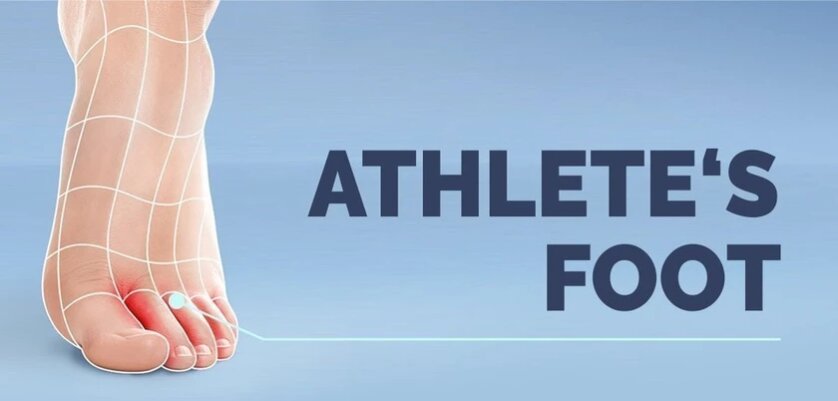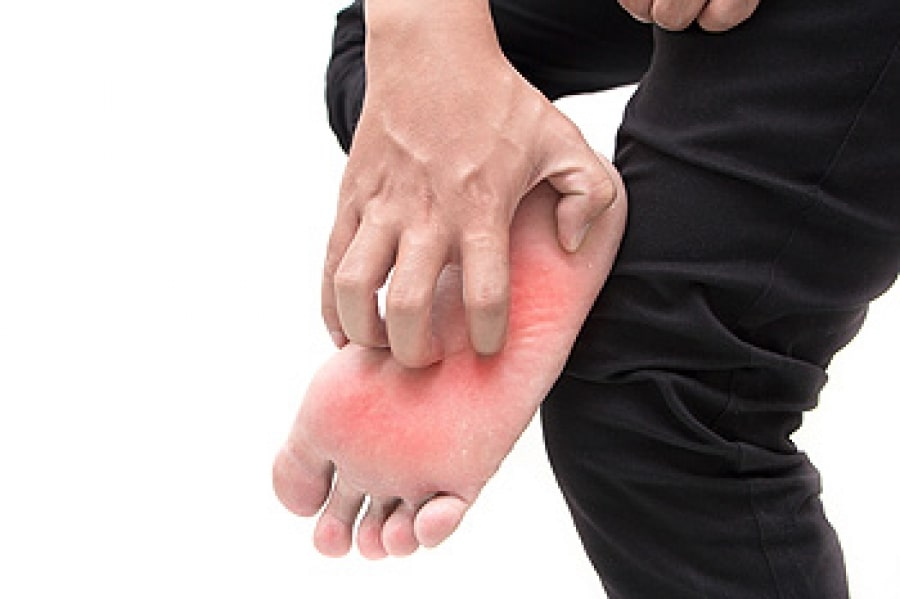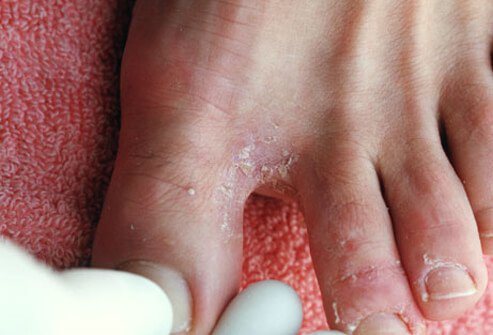WHAT IS ATHLETE’S FOOT?
The athlete’s foot is also known as tinea pedis is a fungal infection that generally starts between the toes. It usually happens in people whose feet have become very sweaty while confined within tightfitting shoes.
Signs and symptoms of an athlete’s foot include a scaly rash that generally causes itching, stinging, and burning. An athlete’s foot is contagious and could be spread via contaminated floors, towels, or clothing.
The athlete’s foot is closely associated with other fungal infections like ringworm and jock itch. It could be treated with over-the-counter anti-fungal medications, but the infection usually recurs. Prescription medications also are available.

ATHLETE’S FOOT SYMPTOMS
Athlete’s foot generally causes a scaly red rash. The rash generally starts in between the toes. Itching is usually the worst right after you take off your shoes and socks. Some kinds of athlete’s feet feature blisters or ulcers. The moccasin variety of athlete’s foot causes chronic dryness and scaling on the soles that extend up the foot’s side. It could be mistaken for eczema or dry skin.
The infection could affect one or both feet and could spread to your hand particularly if you scratch or pick at the infected parts of your feet.
WHEN SHOULD YOU SEE A DOCTOR?
If you have a rash on your foot that does not improve within two weeks of starting self-treatment with an over-the-counter anti-fungal product, see your doctor or primary care physician.
If you have diabetes, see your doctor or primary care physician if you suspect you have an athlete’s foot, particularly if you notice any signs of a possible secondary bacterial infection like excessive redness, inflammation, drainage, or fever.
ATHLETE’S FOOT CAUSES
Athlete’s foot is caused by the same kind of fungus which causes ringworm and jock itch. Moist socks and shoes and warm, humid conditions favor the organisms’ growth.
An athlete’s foot is contagious and could be spread by contact with an infected person or from contact with contaminated surfaces, like towels, floors, and shoes.

ATHLETE’S FOOT RISK FACTORS
You are at greater risk of athlete’s foot if you:
Are a man Frequently wear moist socks or tightfitting shoes
Share mats, rugs, bed linens, clothes, or shoes with someone who has a fungal infection
Walk barefoot in public regions where the infection could spread, like locker rooms, saunas, swimming pools, communal baths, and showers
ATHLETE’S FOOT COMPLICATIONS
Your athlete’s foot infection could spread to other parts of your body, including:
- Your hand – People who scratch or pick at the infected parts of their feet might develop an identical infection in one of their hands.
- Your nails – The fungi related to the athlete’s foot could also infect your toenails, a location that tends to be more resistant to treatment.
- Your groin – Jock itch is usually caused by the same fungus that results in an athlete’s foot. It’s common for the infection to spread from the feet to the groin as the fungus could travel on your hands or a towel.

ATHLETE’S FOOT PREVENTION
These tips could help you avoid athlete’s foot or relieve the symptoms of the infection happens:
- Keep your feet dry, particularly between your toes – Go barefoot to let your feet air out as much as possible when you are at home. Dry between your toes following a bath or shower.
- Change socks frequently – If your feet get very sweaty, change your socks twice a day.
- Wear light, well-ventilated shoes – Avoid shoes made of synthetic material, like vinyl or rubber.
- Alternate pairs of shoes – Do not wear the same pair every day so that you give your shoe time to dry after each use.
- Protect your feet in public places – Wear waterproof sandals or shoes in public pools, showers, and locker rooms.
- Treat your feet – Use powder, preferably antifungal, on your feet every day.
- Avoid sharing shoes – Sharing risks spreading a fungal infection.
ATHLETE’S FOOT DIAGNOSIS
In some cases, your doctor or primary care physician might be able to diagnose an athlete’s foot simply by looking at it. To help confirm the diagnosis and rule out other conditions, your doctor or primary care physician may take a skin scraping or skin sample from your foot for testing in a laboratory.
ATHLETE’S FOOT TREATMENT
If your athlete’s foot is mild, your doctor or primary care physician might recommend using an over-the-counter antifungal ointment, cream, powder, or spray.
If your athlete’s foot does not respond, you might require a prescription-strength medication to apply to your feet. Severe infections might need antifungal pills that you take by mouth.
If you or anyone you know is suffering from an athlete’s foot, our expert providers at Specialty Care Clinics will take care of your health and help you recover.
Call 469-545-9983 to book a telehealth appointment for an at home check-up.
